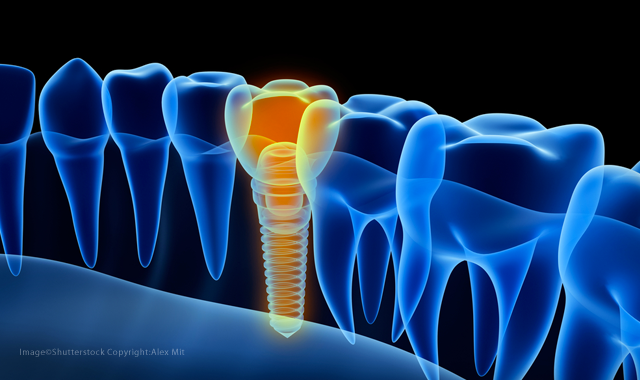Research projects highlight increasing adoption of PEEK implants in clinical practice
More than 40 abstracts were shared during the International PEEK Meeting in Washington, D.C.

A wave of recent research projects presented at the latest International PEEK Meeting in Washington, D.C., highlighted the increasing adoption of PEEK implants in clinical practice as well as the material´s established position due to possible patient benefits. In particular, the potential of carbon fiber-reinforced PEEK (CFR-PEEK) plates for fracture fixation became increasingly compelling; moreover, additive manufacturing was revealed as making progress in the production of PEEK polymer-based implants.
Topics ranging from dental, knee, spinal and trauma implants up to advances in additive manufacturing or medical PEEK performance in general demonstrated the broad scope of current research in PEEK technology and clinical applications. More than 40 abstracts were shared through podium and poster presentations along with invited talks focusing on medical implantable PEEK to attendees from the FDA, industry, academia and research hospitals - supporting the growing relevance and necessity for the International PEEK Meeting.
Carbon fiber-reinforced PEEK (CFR-PEEK) composites - improving postoperative assessments
During the meeting potential of carbon fiber-reinforced PEEK (CFR-PEEK) composite plates for fracture fixation became clear and compelling, in particular for their high fatigue strength and a favorable modulus of elasticity.
Trending research: Can chewing gum be used to detect gum inflammation?
“The potential benefits of a less stiff construct on healing are hugely attractive and the results from some early clinical comparative work with metals, which will be released in October, will only increase the interest in these materials, ” says John Devine, medical business sirector at Invibio Biomaterial Solutions, a leading pioneer and innovator of medical-grade PEEK such as PEEK-OPTIMA™.
One study1 assessed the mechanical stability of locking screws used in CFR-PEEK proximal humerus plates compared to those used in stainless steel plates. The results indicate that CFR-PEEK proximal humerus locking plates provide comparable or superior locking screw fixation strength compared to traditional stainless-steel locking plates. Plus, CFR-PEEK plates tolerated at least an equivalent, and in some sections of the plate, a significantly greater load before failure, when compared to traditional stainless-steel locking proximal humerus plates.
"A wealth of research and clinical experience is confirming that PEEK polymer-based implants have an established position due to potential patient benefits and, what is more, they still offer immense development possibilities," comments Steve Kurtz, Ph.D., Implant Research Center, Drexel University, and conference organizer. "While additive manufacturing in medical is in its infancy, we think it could revolutionize the ease, speed and accuracy with which implants are manufactured.”
Future potential for additive manufacturing technology in medical
Additive manufacturing can deliver patient customized implants (PCI) and enables direct linkage to digital patient models that may change the face of preoperative planning and surgery. 3D printing specialist Apium Additive Technologies GmbH, for example, is offering a commercially available 3D printer that is capable of processing PEEK. The model P155 uses Apium´s innovative patent-pending Fused Filament Fabrication (FFF) 3D printing technology.
Read more: Implanting success: The state of dental implants
Researchers at Drexel University have used the Apium machine to print intervertebral lumbar cages with experimental PEEK-filaments. Although both compressive and compressive-shear performance still need improvement, the researchers are working on that, as future additive technology has the potential to match the performance characteristics of machined cages.2
PEEK polymer and the many virtues of radiolucency
Unlike metal implants, PEEK polymer implants reportedly offer all the advantages of radiolucency, enhancing the accuracy of implant procedures and enabling the timely diagnosis of post-operative complications. Early clinical experience with a radiolucent CFR-PEEK pedicle screw system has demonstrated that the use of CFR-PEEK pedicle screws and rods reduces artifacts in computed tomography (CT) and especially magnetic resonance imaging (MRI). This facilitates better screw positioning and postoperative evaluation, and any potential loosening can be assessed in detail by MRI - additional CT investigation may no longer be necessary.3
References
1) “Is locking screw fixation in carbon fiber composite plates mechanically equivalent to stainless steel plates?” paper Hak DJ.
2) “Comparison of the Mechanical Properties of FFF 3D Printed and Machined Medical Grade PEEK Intervertebral Lumbar Cages” BaÅgül C, MacDonald DW, Siskey R, Kurtz SM.
3) “Clinical Evaluation of a Radiolucent Carbon/PEEK Pedicle Screw System – Early Experience in Degenerative Cases with 12 months follow up” Nydegger T, Klabunde R, Rühli M.